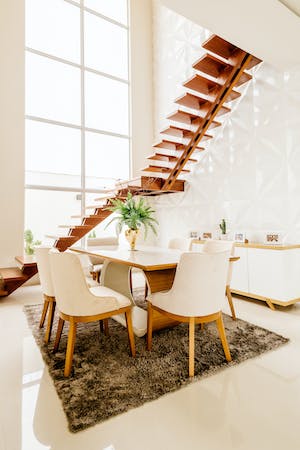What is Interior Design?
by siteadmin

Interior design is the practice of creating interior spaces. It involves everything from planning the architecture and colors of a room to selecting the materials and finishing them.
Interior design involves more than just aesthetics. The goal is to create an environment that is functional, safe and accessible for all residents while also being pleasing and functional. Certified interior designer must meet a number of requirements, including continuing educational requirements and obeying local laws and regulation in their work.
It is both art and science that enhances the interior.
Interior design is an art and science that optimizes the interior environment, promoting health, comfort, beauty and efficiency. It involves planning, researching, coordinating and managing any projects to do these enhancements.
Interior designers must have a deep understanding of human needs, behavior, ergonomics, performance of materials, economics, composition, and material properties. They use these principles in every design project to ensure that the space they create is both functional as well as visually appealing.
Interior designers can work in many different environments. They may be working in residential, commercial or healthcare settings. All of these fields require specialized technical skills and extensive knowledge.
The process of designing and executing interior spaces is called interior design.
An interior space created by a skilled interior designer should incorporate both aesthetics and functionality. An experienced designer focuses their efforts on optimizing the space so that its beauty serves its intended function while meeting their clients' specific requirements.
To achieve success, all project stakeholders must work together to develop concepts, plan space, perform site inspections and conduct programming research. Understanding building codes, standards or regulations is also essential.
Interior architects design spaces using detailed plans. These plans not only showcase aesthetic features of their creation, but they can also include structural components like electrical wiring, plumbing lines, heating/air-conditioning systems etc.
Interior design is the art of combining aesthetics with functionality. It takes into account factors such as user behaviour, comfort conditions, ergonomics, coating specifications, and material and coating specifications.
It is an art to combine form with function.
Combining form with functionality is one the oldest and most challenging challenges facing architects and interior design professionals. When designing a space, whether for commercial use or residential, it is important to consider factors such a space planning.
Professionals from all fields are increasingly focused on creating "liveable", cost-effective environments that meet individuals' needs of all ages and abilities. This work could range from renovating a space to creating a new structure.
If you're interested in entering this field, you might want to enroll at an accredited college or degree program. Graduate or Ph.D.-level design programs can be a valuable source of career-enhancing information.
It is the art of applying beauty to everyday life.
Applying aesthetics in everyday life is a branch of philosophy which explores our everyday experiences, habits, objects, and how they can become part or contribute to aesthetic experiences. Examples include Japanese tea ceremonies and hanging laundry.
The aesthetic theory has traditionally focused on three senses that are objective – sight, hearing, and touching. While these senses are important for understanding our surroundings, other senses such as taste and smell play a major role.
Due to Kant and Descartes’ philosophical perspectives, which link visual and auditory stimuli with the cognition external objects, their importance has decreased in the modern era. Nietzsche & Hegel gave more weight to smell & taste as subjective pleasures, which also contributes to perception of the external world.
https://www.editdesignhouse.com/
Interior design is the practice of creating interior spaces. It involves everything from planning the architecture and colors of a room to selecting the materials and finishing them. Interior design involves more than just aesthetics. The goal is to create an environment that is functional, safe and accessible for all residents while also being pleasing…
Recent Posts
- Carpenters’ Corner: Exploring Essential Woodworking Tools and Their Uses
- Pergolas: Enhancing Outdoor Spaces and Reducing Stress
- Choosing the Right Installation Method for Flooring: A Comprehensive Guide
- Understanding Color Psychology in Flooring: Transform Your Space with the Right Hues
- Elevate Your Space: Custom Closets Embracing Design Trends and Inspirations
